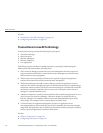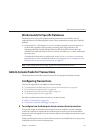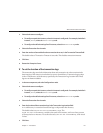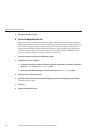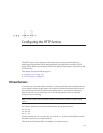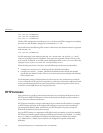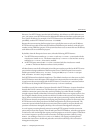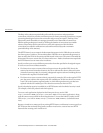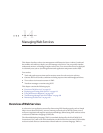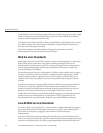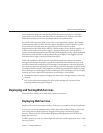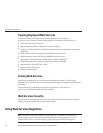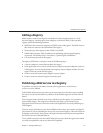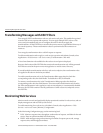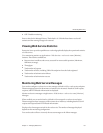
The Keep-Alive subsystem periodically polls such idle connections and queues those
connections with activity into the connection queue for future processing. From there, a request
processing thread again retrieves the connection and processes its request. The Keep-Alive
subsystem is multi-threaded, as it manages potentially tens of thousands of connections.
Ecient polling techniques are used, by dividing the number of connections into smaller
subsets, to determine which connections are ready with requests and which of those
connections have idled for sucient time to deem them closed (beyond a maximum
permissible Keep-Alive timeout).
The HTTP listener’s server name is the host name that appears in the URLs the server sends to
the client as part of a redirect. This attribute aects URLs the server automatically generates; it
does not aect the URLs for directories and les stored in the server. This name is normally the
alias name if the server uses an alias. If a client sends a Host: header, that host name supersedes
the HTTP listener’s server name value in redirects.
Specify a redirect port to use a dierent port number from that specied in the original request.
A redirect occurs in one of these situations:
■
If a client tries to access a resource that no longer exists at the specied URL (that is, the
resource has moved to another location), the server redirects the client to the new location
(instead of returning a 404), by returning a designated response code and including the new
location in the response’s Location header.
■
If a client tries to access a resource that is protected (for example, SSL) on the regular HTTP
port, the server redirects the request to the SSL-enabled port. In this case, the server returns
a new URL in the Location response header, in which the original insecure port has been
replaced with the SSL-enabled port. The client then connects to this new URL.
Specify also whether security is enabled for an HTTP listener and what kind of security is used
(for example, which SSL protocol and which ciphers).
To access a web application deployed on the Enterprise Server, use the URL
http://localhost:8080/ (or https://localhost:8181/ if it is a secure application), along
with the context root specied for the web application. To access the Admin Console, use the
URL https://localhost:4848/ or http://localhost:4848/asadmin/ (its default context
root).
Because a virtual server must specify an existing HTTP listener, and because it cannot specify an
HTTP listener that is already being used by another virtual server, create at least one HTTP
listener before creating a new virtual server.
HTTP Listeners
SunGlassFishEnterpriseServer2.1AdministrationGuide • December2008152



